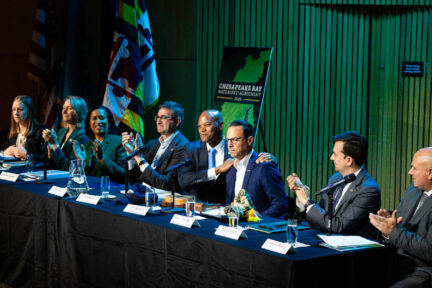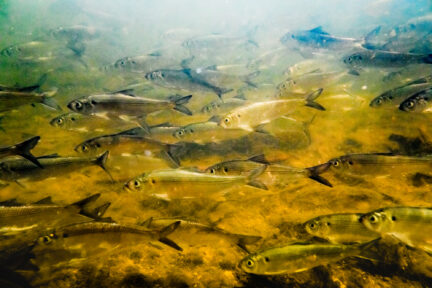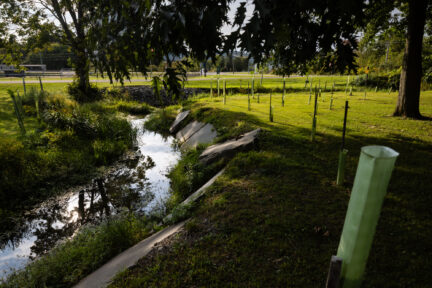24 new public access sites open in Chesapeake Bay watershed
The Chesapeake Bay Program is pleased to announce that in 2016, our partners opened 24 boat ramps, fishing piers and other sites that grant the public access to creeks, streams and rivers in the region.
The Chesapeake Bay Program is pleased to announce that in 2016, our partners opened 24 boat ramps, fishing piers and other sites that grant the public access to creeks, streams and rivers in the region. Virginia opened 14 sites along nine waterways; Pennsylvania opened four sites along three waterways; Maryland opened four sites along three waterways; and West Virginia opened two sites along two rivers. There are now 1,271 public access sites in the watershed for boating, fishing, swimming and other recreational activities.
The varied ownership of the region’s public access sites demonstrates the importance of establishing strong partnerships and public access initiatives at all levels of government and with nongovernmental organizations: 13 of the new sites are owned by local governments, 10 are owned by state governments and one is jointly owned by state and local government. Funding for these public access sites is also varied, coming from numerous sources, including local and state governments, nonprofit organizations and federal funding, such as the National Park Service’s Gateways and Trails Program. Typical projects leverage multiple sources of funding.
Increasing public access to open space and waterways creates a shared sense of responsibility to protect these important natural environments. Through the Chesapeake Bay Watershed Agreement, our partners have committed to increasing public access as part of a larger effort to engage communities in our conservation work. The number of public access sites in the Chesapeake Bay watershed is on track to reach 1,439 by 2025. Since tracking began in 2010, our partners have opened 132 sites, meeting 44 percent of our goal to open 300 sites over the next decade.
Facts
In 2016, 24 new sites or new facilities at existing sites were opened to the public. Virginia opened 14 sites, Pennsylvania opened four sites, Maryland opened four sites and West Virginia opened two sites. This brings the total number of access sites in the Chesapeake Bay watershed to 1,271.
Virginia
- Basic Park
- Clontz Park
- Farnham Creek
- Onancock Town Ramp & Wharf
- Pitts Landing
- Powhatan State Park
- Ridgeview Park
- Rocky Pen Park
- Sleepy Hole Park Canoe Launch
- Sleepy Hole Park Fishing Pier
- Ware Creek Wildlife Management Area
- West Point
- Windmill Point Landing
Pennsylvania
- Fort Hunter County Park
- Fort Hunter County Park
- Howe Township Park
- Plains Township
Maryland
- Broad Creek
- Fort Smallwood Park Boat Ramp
- Fort Smallwood Park Swim Site
- Franklin Point State Park
West Virginia
- Keyser
- Wardensville
Issues
As development continues across the Chesapeake Bay watershed, demand for places that allow the public to reach the water remains high. State, federal and local governments are often the guardians of these places, providing opportunities for everyone to enjoy the region’s natural and cultural bounty. Because physical access to the Bay and its tributaries remains limited—with real consequences for quality of life, the economy and long-term conservation—Chesapeake Bay Program partners set a goal to bring the total number of access sites in the watershed to 1,439 by 2025.
Public access to open space and waterways can improve public health and quality of life. People rely on outdoor places to exercise, relax and revive their spirits. Time outdoors can strengthen family bonds and nurture active, creative children. And access to the Chesapeake Bay and its tributaries can build personal connections with the places that have shaped life in the region for centuries. This has a distinct economic and environmental value, as it boosts tourism and creates citizen stewards who care for local resources and engage in the conservation of the Bay and its many resources.
Importance
Public access to open space and waterways can improve public health and quality of life. People rely on outdoor places to exercise, relax and revive their spirits. Time outdoors can strengthen family bonds and nurture active, creative children. And access to the Chesapeake Bay and its tributaries can build personal connections with the places that have shaped life in the region for centuries. This has a distinct economic and environmental value, as it boosts tourism and creates citizen stewards who care for local resources and engage in the conservation of the Bay and its many resources.
Quotes
“Having access to waterways and woodlands throughout the Chesapeake Bay watershed and understanding the importance of this natural resource is essential to its protection and continued enjoyment. We don’t value what we don’t know, and we won’t protect what we don’t value. There is much about the natural world that we don’t understand, yet it is vital to our well-being and survival.”
-- Nick DiPasquale, Director, Chesapeake Bay Program and Chair, Chesapeake Bay Program Management Board
"Helping communities develop new public access on the Chesapeake Bay and rivers is important to the National Park Service. We are happy to be able to offer financial and technical assistance to our state and local partners for new recreation opportunities."
-- Chuck Hunt, Superintendent, National Park Service Chesapeake Bay Office and Chair, Chesapeake Bay Program's Fostering Stewardship Goal Implementation Team
“The Dauphin County Parks Department is delighted with our new public access at Fort Hunter Park on the Susquehanna River. The waterfront had been underused, but now has two new non-motorized boat launches, a quarter mile walking trail, increased parking, and interpretive signs. The public loves it!”
-- Carl Dickson, Director, Dauphin County Parks and Recreation
“The Nansemond River and public access to it are very important to many citizens of Suffolk. Last year, the City made significant progress by constructing its first two public facilities for paddle craft on the Nansemond River. Designation of the Nansemond River as a part of the Captain John Smith Chesapeake National Historic Trail has reinforced the river’s importance locally and provided the inspiration for spurring these projects to completion.”
-- Michael J. Kelly, Principal Planner, Suffolk Department of Parks and Recreation



